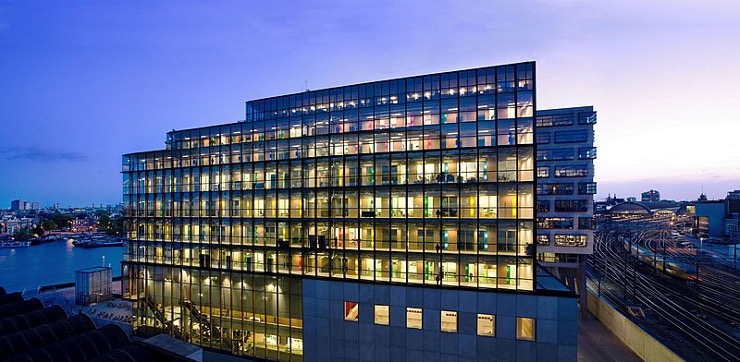Hyperreality went viral recently when Twitter user Juan tweeted in amazement about the lifelike recreation of the streets of Amsterdam depicted in Activision’s Call of Duty: Modern Warfare 2. In a, roughly five minute cinematic, the player can take a quick break from their fictionalised role in the British SAS to explore the streets near Rijksmuseum. The recreation of the streets, bridges and buildings of Amsterdam are replicated with such faith to their original counterparts that they are almost indistinguishable from reality; in fact, the most unrealistic moment in this cinematic is that you don’t get flattened by a cyclist in the process of your explorations.
These photorealistic depictions of public spaces are becoming increasingly common in games, as companies continue to mainly compete on graphical fidelity, rather than gameplay differentiation per se. Indeed, for some creators, the simulation and illusion of immersiveness within an alternative reality is ultimately the peak of what gaming should achieve. Amidst the omnipresent (threat? Promise?) discussions of the metaverse, explorations of public spaces in a virtual world are only likely to accelerate.
Inevitably, a public reach can result in a public pushback. And indeed, in the wake of Call of Duty’s hyper realistic recreations, the manager of the Conservatorium Hotel in Amsterdam has voiced their displeasure at the ‘apparent and unwanted involvement’ of their (luxury 5 star) Hotel in the game. Whilst worded carefully, Hotel manager Roy Tomassen is not ruling out legal action as they consider the ‘undesirability’ of their involvement.
A replication of the Conservatorium Hotel features in both the single player and multiplayer versions of Call of Duty, though re-branded as the ‘Breenbergh’. In single player mode, the hotel is featured in a mostly cinematic exploration of the virtual Amsterdam, within the narrative context of an illicit transaction between a drug cartel and the Iranian Military. In multiplayer mode, the Hotel forms a more specific site for non-narrative driven, competitive gun battles between players within the hotel: much more explicitly named the ‘Breenbergh’ (deathmatch) level.
Importantly, renaming the building is not enough to disguise the fact the Breenbergh is an emulation of the Conservatorium (and nor does it seem to be Activision’s intention): it is a distinctive building, originally built in the 1800s, and subsequently redesigned in glass and steel by an Italian architect to ‘create a contrast between antique and modern’. Whilst lightly ‘re-branding’ the Conservatorium may avoid some trade mark battles, this is not the end of a potential legal dispute over its use in the game.
The Conservatorium Hotel, Amsterdam (img)
So, what are the possible legal actions open to the owners of the Conservatorium if they are upset with the depiction of the Hotel? This blog certainly will not provide an exhaustive account of all applicable laws on public spaces, which are ultimately a complex web of property laws, intellectual property laws, privacy, and defamation, amongst others. Instead, I want to consider more narrowly how such cases could create a chilling effect on developing technologies like photogrammetry, and ultimately, the extent to which developers can recreate public spaces within a game world.
What is photogrammetry?
Whilst perhaps a lesser-known application of photogrammetry, in video games, this technology is essentially a process of creating multiple, overlapping photographs which can then be used to measure, map, and create textures for 3D models in games. In theory, the application of this technology in translating ‘real’ world objects into a virtual world are limitless: this could include objects like clothing or firearms, or larger environments, whether naturalistic (e.g., a mountain range) or a cityscape. Importantly, photogrammetry is not the only means through which objects can be replicated and inserted into a game world (consider e.g., 3D laser-scanning); but it does present the tantalising promise that anyone, with enough time, money and effort, could achieve such a feat.
In terms of the legalities of this technology, we therefore need to ask, does the law permit a game creator to: (a) take lots of pictures/videos/scans of objects in a public space and (b) subsequently sell a depiction of that public space within a commercial product?
Games and the (copyright) laws of recreating public spaces
As I mentioned above, many laws may be relevant for the regulation of recreating public spaces in games. However, for the purposes of interrogating photogrammetry, the main law we are concerned with is copyright, which regulates the creation and dissemination of creative works.
First off, architectural works, like the Conservatorium Hotel, can be protected by copyright law. By this, I’m referring to the actual building itself, rather than, e.g., the drawings or blueprints of the architecture (noting that these also may be protected separately). In principle, this means, absent any rule to the contrary, copyright protects the architecture of the hotel, and it is an infringement to ‘copy’ it by taking photographs of it or filming it without the permission of the copyright owner (usually the architect themselves, absent any agreement to the contrary).
However, many countries have a very pragmatic exception to this (otherwise quite restrictive!) rule known colloquially as ‘freedom of panorama’. Essentially, this exception is a carve out from the broader rule in copyright that says it’s ok, in some circumstances, to take pictures or films of some types of copyright works where they are permanently placed in a public space. Particularly, this would be relevant for the kinds of architectural works we would be concerned about when recreating cityscapes in games.
Importantly, copyright and its exceptions are territorial; the laws regulating what public spaces you can recreate in a game vary from country to country. The Netherlands, for example, has quite a permissive freedom of panorama exception when compared with other countries in the EU, like France or Italy. In the Netherlands there is, for example, no restriction on using pictures of publicly placed architectural works commercially. On the face of it then, taking lots of pictures of buildings on the streets of Amsterdam, scanning them into a game to make textures and maps, and subsequently selling that game, is not legally problematic from the perspective of copyright.
However, the law is less clear about whether the interior of spaces, which are in theory accessible by the public, are included within the scope of this exception, such as e.g., museums, or in this case, the interior of a hotel. Taking a cautious interpretation of the law, the answer to this seems to that it is not ok to make replications of these interiors, and freedom of panorama in the Netherlands only applies to those works available ‘in the open air’. This could be problematic for Call of Duty’s multiplayer Breenbergh level which takes place within the hotel; this is unlikely to fall within the scope of the Netherlands’ freedom of panorama laws and could be considered an infringement of the architect’s copyright.
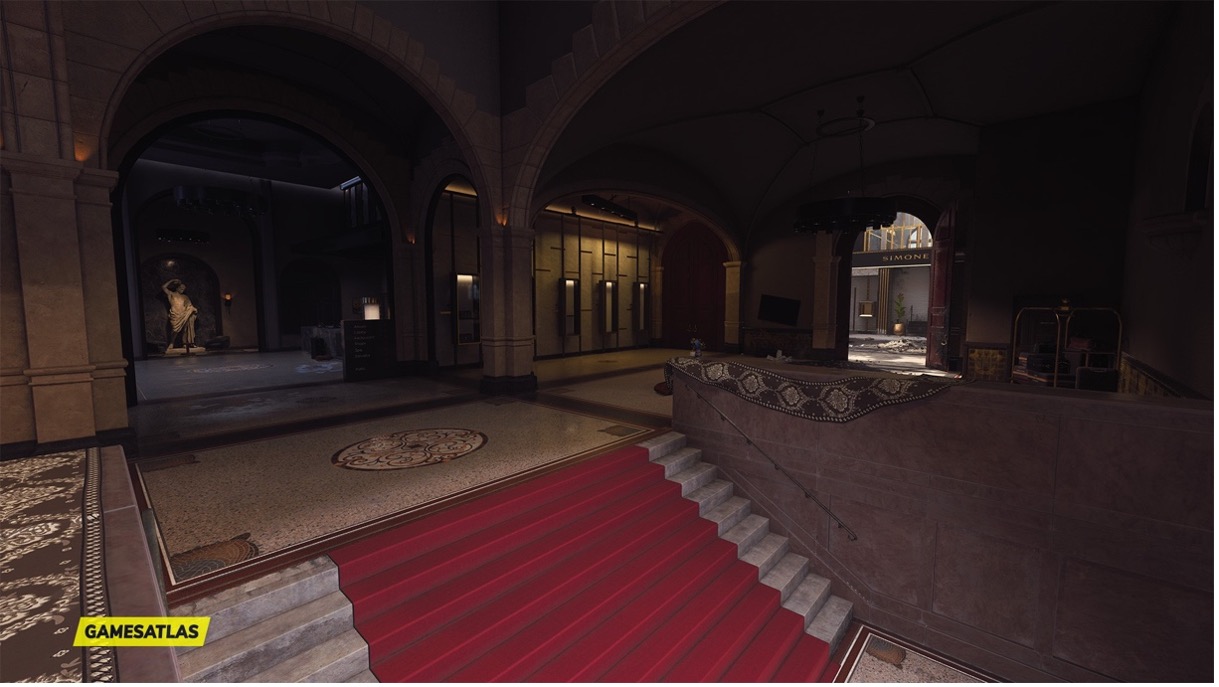
The entrance to the Breenbergh Hotel in Call of Duty: Modern Warfare 2 (img)
Importantly, copyright gives the rightsholder a choice about what they want to do with their right; finding that this depiction of the interior of the hotel could be an infringement of copyright does not guarantee that it will be enforced. But action or inaction can all create legal uncertainty for game creators.
Regardless of what the Hotel owners choose to do, the high-profile of this alleged dispute could create a culture of asking permission rather than forgiveness from rightsholders of publicly placed works. This is, of course, no small task, and will be more achievable for some (larger) companies than others. Reports of this in practice are rare to non-existent. Anecdotally, Ubisoft approached Philips for permission to show their factory in Eindhoven being bombed as part of recreation of the events of WW2 in Brothers in Arms: Hell’s Highway. Presumably unsuccessful talks resulted in the replacement of the iconic Chrysler building with a generic skyscraper in Sony’s Spider-Man: Miles Morales.
There are other options outwith the freedom of panorama exception where re-use of copyrighted buildings is concerned: for example, game creators usually do not need to ask for permission or payment to recreate graphic representations of buildings which are in the ‘public domain’ (i.e., where copyright has expired). However, it’s often good practice (and practical for the purposes of e.g., photogrammetry or laser-scanning) to get access to these properties with the consent of the *property* owner, if not the intellectual property owner. A recent example of this is the recreation of Robert Burns’ cottage by GGlab, which was achieved by working in close association with the Ellisland Trust. Through collaborations and access granted from the property owner, a higher degree of authenticity, thus immersiveness, is possible in the game world.
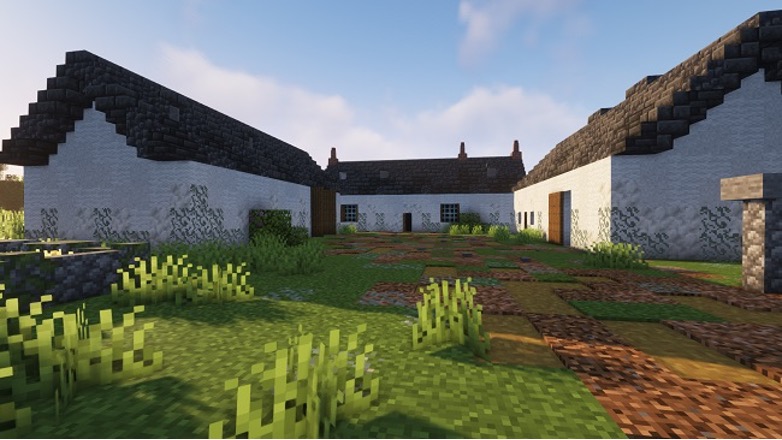
Robert Burns’ cottage as depicted by the Glasgow Games Lab in Minecraft (img)
Other copyright-related workarounds skirt the boundaries of copying like-for-like architectural ‘expressions’ versus ‘ideas’ of a public space: Rockstar’s Grand Theft Auto’s depictions of cityscapes always lie somewhere between fantasy and reality, skirting the boundaries of both. Often, the world contains lots of Easter Eggs which act as an homage to the game’s developers based in Scotland: Kincaid Bridge in Grand Theft Auto: San Andreas, for example, is a near replica of the Forth Road bridge.
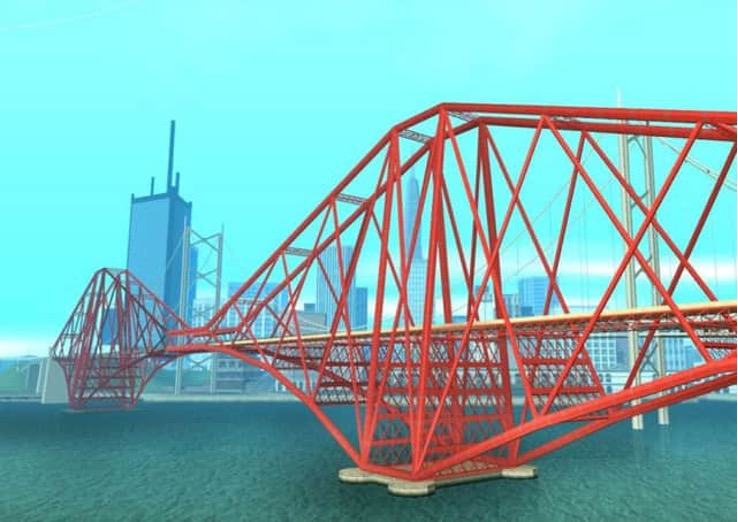
Kincaid Bridge in Grand Theft Auto: San Andreas (img)
Morality, integrity, and the (old) debate about violence in games
The strict ‘legal’ question of whether it’s ok to use photogrammetry to recreate works of architecture and public spaces in games is a necessary one, but perhaps less provocative than the bigger question that surrounds this incident: what is it about the quality of the use of a publicly placed work that is important for rightsholders? As I have referenced throughout this blog, Call of Duty is hardly innovative in using a public space, and existing architectural works, as a setting within their game.
Instead, revisiting the Conservatorium manager’s original complaint, we can see that this is embroiled in a bigger consideration about the brand image of the company. In particular, the hotel manager emphasised that ‘we don’t support games that seem to encourage the use of violence […] the game in no way reflects our core values’.
At the risk of re-igniting arguments on the morality of violence and video games (cumulating in the landmark string of 1993 US hearings), I do not intend to use this blog to re-visit the extensive debates and literature on the relationship between them. Instead, I am interested in this position because there is an explicit moral dimension in a claim that we would otherwise expect to have a more economic dimension in copyright. Here, the Hotel manager is not complaining that Activision’s actions have in some way diverted revenues from them; they are not suggesting there is some monetary value attached to the use of the Hotel that could have been achieved by securing a licensing agreement to use the architecture of the Hotel. Instead, it is more reminiscent of a call to a right of integrity: that the Hotel is being used in the game in a way that is derogatory or prejudicial to the reputation of the copyright author (in this case presumably the architect, rather than the manager of the hotel) because of its association with violence.
This integrity-like call is an important vector for game creators to consider when recreating public places, if not an entirely new concept in game development. Violence and particularly military associations between third-party intellectual property and in-game worlds have always been inflammatory for rightsholders (see e.g., the trade mark of the ‘kill cam’ in Sniper Elite, depictions of Manuel Noreiga as a ‘major antagonist’ in previous a Call of Duty, changes to the depiction of vehicles and firearm names). Perhaps the most surreal example comes from the official apology issued by Sony to the Church of England over the depiction of the (otherwise public domain) Manchester Cathedral in Resistance: Fall of Man.
At the other end of the spectrum, this consideration (respect) of integrity must be balanced alongside the promise that technologies like photogrammetry offer for education, preservation and accessibility. Indeed, where games have recreated public spaces that are framed around promoting cultural heritage, these have been lauded, even when skirting the bounds of law. In particular, I was reminded of the recreation of the Notre Damme in Assassin’s Creed: Unity, which has since been heralded as a possible reference point for rebuilding.
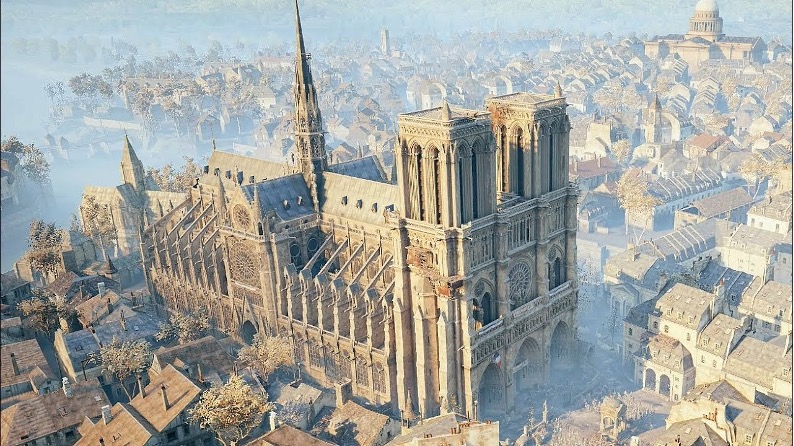
Notre Damme, Paris, as depicted in Assassin’s Creed: Unity (img)
The difference in perception and treatment of these re-creation of public spaces within a game is curious because the nature of the work (the iconic architecture) and the purpose that’s being recreated for (as an area for the player to explore) is broadly the same for both Assassin’s Creed and Call of Duty. In fact, I am not inclined to find the presence or lack of violence as an explanatory factor for how they would received: Assassin’s Creed is not exactly passivist in its approach to violence (if not militia violence).
Instead, there are more complex value judgements surrounding how inhabitants of public spaces perceive the legitimacy of recreations in new, virtual realities, and whether these will act as trigger points to take legal action. Game design both feeds from, and into, our experiences of public spaces; and copyright law is but one facet in the legal tapestry of regulation which can act as a potential restraint on this developing relationship.
* This blog was first published by the Glasgow Games Lab, with thanks to Tim Peacock and Matt Barr
** Read more about how freedom of panorama works ‘in reality’ in our project page: Freedom of Panorama: Making Copyright (In)visible
*** As an interesting (if upsetting) aside, the relationship between public spaces and video games is also contributing to the concept of ‘architectures of violence’, with parallels between virtual spaces in game design and real spaces that anticipate violence (in the example from this article, US schools as a site of possible shootings)


